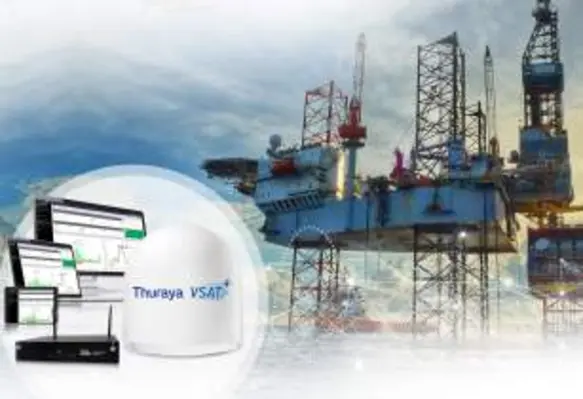IEC Telecom Group and Thuraya Telecommunications have collaborated to present at one of the leading offshore conferences held in Dubai, the UAE
Added value and comprehensive service are now the expectation as the shipping industry’s use of digital communication matures and operators require more from their VSAT connection. And essential back-up systems can also work harder to protect business continuity.
Speaking at a recent offshore industry conference, Nabil Ben Soussia, CEO Asia, Middle East and CIS at IEC Telecom Group, said, “Today we see far fewer ships operating just with a single line of communication. For example, it’s now common practice to equip an onboard network with one or two back-up lines. In fact, VSAT packages now routinely include L-Band along with any Ka or Ku offer. The business is changing and now, more than ever, digital service providers need to keep up with the pace.”
Speaking alongside him, Antti Syrjanen, vice-president portfolio management at Thuraya, which partners with IEC Telecom on many maritime services, said, “Thuraya’s next generation programme is a comprehensive programme that cover land, sea and air connectivity and targets key enterprises in the transportation, logistics, energy, utilities and maritime sectors across Europe, Africa and the Middle East as well as the fast growing Asia Pacific region. Its maritime and energy IoT solutions are ideal for companies that seek flawless and effective management of their large fleets or complex infrastructure and assets.”
Soussia pointed out that the development of specific maritime software is progressing at speed, allowing full customisation of ship and fleet connectivity. He commented, “Vessel operators want to customise their satcom network to maximise what they do with it. The maritime industry requires optimised software capable of operating seamlessly over VSAT and back-up systems as well. Business continuity is essential, otherwise efforts invested into digitalisation could be wasted.”
Between them, IEC Telecom and Thuraya are able to meet many of the diverse needs of the maritime industry – from small vessels and workboats, to fishing fleets and ocean-going ships, to offshore oil and gas platforms – making them well-placed to identify changing requirements and anticipate new developments.
The march towards digitalisation, fast-tracked by the pandemic which drove businesses to find new ways of operating, is increasing the data-driven environment. It is predicted that by 2025, almost 50% of data will be stored in the cloud, while about 30% of data generated will be consumed in real-time.
High tech ships and offshore installations are now offices at sea and the associated requirements for managing large volumes of critical data via reliable connectivity are increasing exponentially. With all this reliance on data transfer and vessel monitoring, 24/7 connectivity is now expected.
Soussia explained, “Business continuity is critical now whatever the location or local conditions. Digital systems need to be capable of operating seamlessly over GSM and satcom. With the amount of data needing to be recorded and transferred seamlessly between ship and shore, often in real time, a vessel cannot just drop down to email-only mode if the primary network goes down. It is therefore imperative to ensure that vital software services can be delivered both over VSAT and back-up systems so that, when one loses connectivity, the other takes over without breaking connection or losing important data.”
Soussia further added, “Having a back-up system is not a new concept. What is new is the ability to use these systems for important operational functions. Thanks to the new generation of maritime software, this is now a reality and one that will become increasingly important over coming years.”









